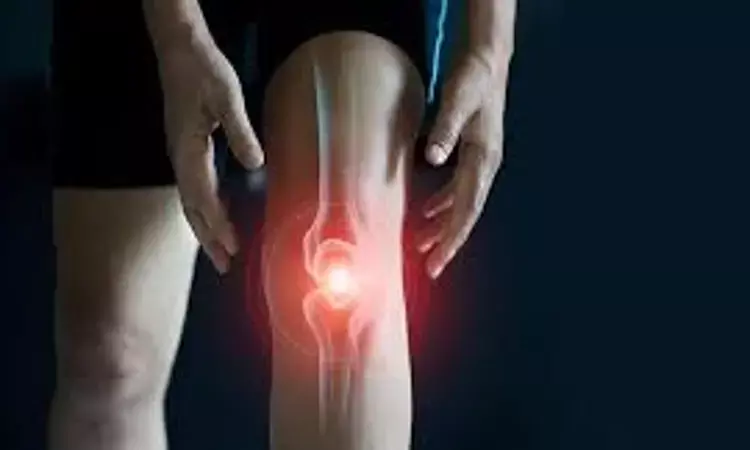- Home
- Medical news & Guidelines
- Anesthesiology
- Cardiology and CTVS
- Critical Care
- Dentistry
- Dermatology
- Diabetes and Endocrinology
- ENT
- Gastroenterology
- Medicine
- Nephrology
- Neurology
- Obstretics-Gynaecology
- Oncology
- Ophthalmology
- Orthopaedics
- Pediatrics-Neonatology
- Psychiatry
- Pulmonology
- Radiology
- Surgery
- Urology
- Laboratory Medicine
- Diet
- Nursing
- Paramedical
- Physiotherapy
- Health news
- Fact Check
- Bone Health Fact Check
- Brain Health Fact Check
- Cancer Related Fact Check
- Child Care Fact Check
- Dental and oral health fact check
- Diabetes and metabolic health fact check
- Diet and Nutrition Fact Check
- Eye and ENT Care Fact Check
- Fitness fact check
- Gut health fact check
- Heart health fact check
- Kidney health fact check
- Medical education fact check
- Men's health fact check
- Respiratory fact check
- Skin and hair care fact check
- Vaccine and Immunization fact check
- Women's health fact check
- AYUSH
- State News
- Andaman and Nicobar Islands
- Andhra Pradesh
- Arunachal Pradesh
- Assam
- Bihar
- Chandigarh
- Chattisgarh
- Dadra and Nagar Haveli
- Daman and Diu
- Delhi
- Goa
- Gujarat
- Haryana
- Himachal Pradesh
- Jammu & Kashmir
- Jharkhand
- Karnataka
- Kerala
- Ladakh
- Lakshadweep
- Madhya Pradesh
- Maharashtra
- Manipur
- Meghalaya
- Mizoram
- Nagaland
- Odisha
- Puducherry
- Punjab
- Rajasthan
- Sikkim
- Tamil Nadu
- Telangana
- Tripura
- Uttar Pradesh
- Uttrakhand
- West Bengal
- Medical Education
- Industry
Transillumination method in total knee arthroplasty: New approach with old tools

Murodulla Karimov et al conducted a study to evaluate the possibility of precise intraoperative localization of the lateral genicular arteries by an orthopaedic surgeon using the transillumination method. The study was published in “International Orthopaedics.”
The authors utilized the light of Storz Xenon 300 Light Source for Endoscopy, the tip of which is tightly inserted into the intra-articular side of the lateral retinaculum, while lifting and everting the patella outwards in 90° with towel clips in the medial edge (the limb is in 180° of extension), while the assistant makes fan-like movements from top to bottom and medial to lateral. The arteries are visualized as dark red and identified in the upper-lateral and lower-lateral directions lateral retinaculum, after which the direction of the arteries is marked with a marker. Next, the lateral retinaculum is released distally from the marked edges to the blood vessels, which remain intact.
12 patients underwent cemented TKA with patella-friendly Zimmer Biomet NexGen Legacy Posterior Stabilized prostheses (without patellar resurfacing), seven right knees and five left knees. The mean age of patients in the study group was 66.636 ± 7.003 years. The minimal follow-up period was 13 months (mean—16.363 ± 2.5 months). Functional outcomes were assessed using Knee Society and a specific patellar questionnaire—Kujala Score. Intraoperative detection of insufficient patellar stability and/or patellar maltracking was based on the no-thumb technique. In pre- and postoperative period X-ray investigation, standard standing X-ray and Merchant view were used to evaluate implant position and patellofemoral congruency.
Key findings of the study were:
• In this study, ten out of twelve knee joints (83.3%) had at least one artery visible by the proposed method in the lateral parapatellar area.
• Five out of ten knee joints had more than one artery that could be visualized and identified as an arterial vessel.
• Postoperative Knee Society Score showed significant improvement from a mean 51.181 ± 3.868 to a mean 88.727 ± 3.663.
• Mean hospital length of stay is 8.545 ± 1.863 days.
• X-ray assessment using standard anteroposterior, lateral, and Merchant skyline views showed appropriate implant positioning and patellofemoral congruency.
• The mean Kujala Score in the postoperative period (3 and 6 months) was 67.3 ± 6.75 and 75.6 ± 6.42, respectively.
The authors concluded that – “Lateral release of the patellar retinaculum should be carried out under careful monitoring and visualization of the lateral genicular arteries. Using the proposed transillumination method, an orthopaedic surgeon can perform a lateral release while pre serving the lateral blood supply to the patella, when the medial side has already been sacrificed by the medial parapatellar approach. This method provides an opportunity to avoid iatrogenic devascularization of the patella, postoperative patellar complications, and, importantly, blood loss reduction in TKA.”
Further reading:
Transillumination method in total knee arthroplasty: new approach with old tools Murodulla Karimov, Sarvar Madrakhimov International Orthopaedics (2024) 48:449–454 https://doi.org/10.1007/s00264-023-05977-6
MBBS, Dip. Ortho, DNB ortho, MNAMS
Dr Supreeth D R (MBBS, Dip. Ortho, DNB ortho, MNAMS) is a practicing orthopedician with interest in medical research and publishing articles. He completed MBBS from mysore medical college, dip ortho from Trivandrum medical college and sec. DNB from Manipal Hospital, Bengaluru. He has expirence of 7years in the field of orthopedics. He has presented scientific papers & posters in various state, national and international conferences. His interest in writing articles lead the way to join medical dialogues. He can be contacted at editorial@medicaldialogues.in.
Dr Kamal Kant Kohli-MBBS, DTCD- a chest specialist with more than 30 years of practice and a flair for writing clinical articles, Dr Kamal Kant Kohli joined Medical Dialogues as a Chief Editor of Medical News. Besides writing articles, as an editor, he proofreads and verifies all the medical content published on Medical Dialogues including those coming from journals, studies,medical conferences,guidelines etc. Email: drkohli@medicaldialogues.in. Contact no. 011-43720751


